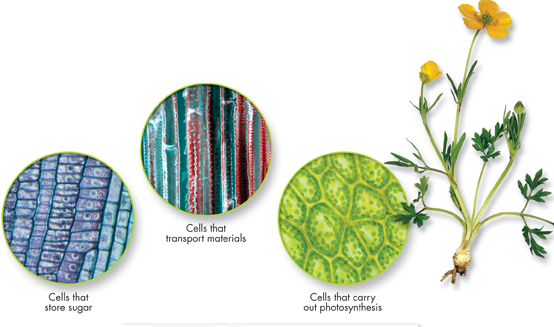10.4 Cell Differentiation
 How do cells become specialized for different functions?
How do cells become specialized for different functions? What are stem cells?
What are stem cells? What are some possible benefits and issues associated with stem cell research?
What are some possible benefits and issues associated with stem cell research?
embryo • differentiation • totipotent • blastocyst • pluripotent • stem cell • multipotent
Compare/Contrast Table As you read, create a table comparing the ability of different cell types to differentiate.
THINK ABOUT IT The human body contains an estimated 100,000,000,000,000 (one hundred trillion) cells. That's a staggering number, but in one respect it's not quite as large as you might think. Why? Try to estimate how many times a single cell would have to divide through mitosis to produce that many cells. It may surprise you to learn that as few as 47 rounds of cell division can produce that many cells.
The results of those 47 cell cycles are truly amazing. The human body contains hundreds of distinctly different cell types, and every one of them develops from the single cell that starts the process. How do the cells get to be so different from each other?
From One Cell to Many
 How do cells become specialized for different functions?
How do cells become specialized for different functions?
Each of us started life as just one cell. So, for that matter, did your pet dog, an earthworm, and the petunia on the windowsill. These living things pass through a developmental stage called an embryo, from which the adult organism is gradually produced. During the development process, an organism's cells become more and more differentiated and specialized for particular functions. Figure 10–18 shows some of the specialized cells found in the roots, stems, and leaves of a plant.

FIGURE 10–18 Specialized Plant Cells

Table of Contents
- Formulas and Equations
- Applying Formulas and Equations
- Mean, Median, and Mode
- Estimation
- Using Measurements in Calculations
- Effects of Measurement Errors
- Accuracy
- Precision
- Comparing Accuracy and Precision
- Significant Figures
- Calculating With Significant Figures
- Scientific Notation
- Calculating With Scientific Notation
- Dimensional Analysis
- Applying Dimensional Analysis




